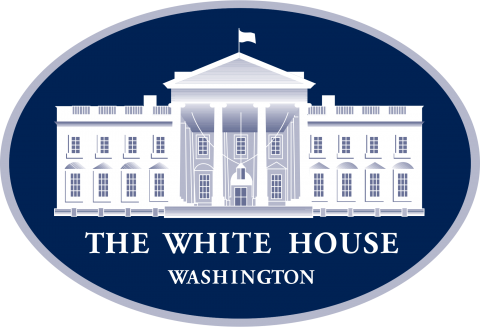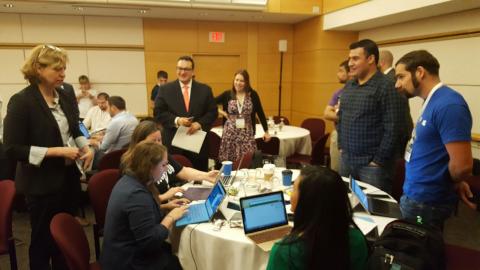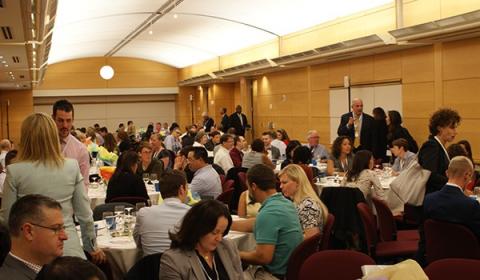


“Lead, follow or get out of the way.”
These rebellious, frustrated words filled the air in the final moments of the first ever White House Hackathon on May 26, 2016. They were spoken by Think of Us CEO Sixto Cancel but they had the collective breath of a belabored foster care system behind them.
So how did the words an entire system wanted to say end up coming out of the mouth of a 24-year-old social entrepreneur?
This year’s National Foster Care month was full of hope and enthusiasm. Nowhere was this more evident than in our nation’s capital to put a cap on the month.
The hackathon, an event, typically lasting several days, in which a large number of people meet to engage in collaborative computer programming, was the product of a partnership between the Department of Health and Human Services and the aforementioned Think of Us. The White House Hackathon was set to focus on improving foster care. No small task.
Convening in D.C. were stars in their respected fields. Teams of alpha nerds (written with love) made their way to the capital from all ends of the country and even a team from Romania made the trek to lend their expertise. Most areas of technology and data were represented. There was a strong contingent from Silicon Valley who had made the long trip to contribute to the first of its kind event.
The day kicked off with White House Special Assistant and Policy Advisor Molly Dillon greeting the room that was at full capacity. Through intermittent rounds of applause, Dillon thanked those responsible for making the day possible. Commissioner Rafael Lopez of the Administration on Children, Youth and Families at U.S. Department of Health and Human Services as well as HHS staff Jenny Wood and Kurt Heisler were given recognition. The loudest cheers came when the “inspirational” Sixto Cancel and his team at Think of Us were given the recognition for their partnership with HHS to make the day a reality. Others cited for their efforts in the introduction were; Eric Miley of Annie E. Casey, Puja Balachander, Wendy Harmon and Emily Ianacone from the Presidential Innovation Fellows, the Pritzker Foster Care Initiative’s Wendy Wexler and Angela Vahill of Baker Mackenzie.
Dillon then introduced her boss, Roy L. Austin Jr. who serves as the Deputy Assistant to the President for Urban Affairs, Jobs and Opportunity. Austin commended Dillon for her work in foster care over the last three years before addressing the crowd. Austin spoke of the Comprehensive Child Welfare Information Systems (CCWIS) Final Rule. He shared that for the first time in 23 years, HHS issued new regulations that guide the use of technology in child welfare. The CCWIS regulations promote innovation and allow state and county child welfare agencies to use more effective technology to quickly identify youth and family needs and link them to services. He also relayed that new regulations to promote the exchange of information between child welfare agencies, health care facilities, education systems and courts to better serve young people in and aging out of care would be a priority. He then conveyed that all other aspects of life are made easier by the use of 21st Century technology, an idea that would be repeated by other speakers over the two-day event, and how foster care has yet to catch up with the rest of the world. “We need to make sure that the child welfare system is working in the 21st Century. Technology has brought so much good into our lives, but often we have found that the child welfare system has not synched with the advances in technology”, said Austin. “We use our phones and tablets to call a cab, order a pizza, send photos to our friends and even to track our exercise habits…well, some of us.” As the crowd’s laughter dies down, he continues, “There’s no reason we can’t use existing technology to build new apps and programs to better serve youth in care and adults in their life. And even prevent kids from entering care in the first place.”
He also announced that HHS teamed up with the General Services Administration's (GSA) Office of Citizen Services and Innovative Technologies to provide $1 million worth of consulting services to states as they procure agile child welfare data systems. In this new partnership, GSA will provide in-depth training and assistance on modular procurements, user-centered design, agile development, application programming interfaces and open source technologies for child welfare agencies across the country.
Austin reveled in being the bearer of great news to the room, adding the release of a comprehensive toolkit for foster youth transitioning out of care that highlights ways to successfully pursue higher education and careers post high school, created by the US Department of Education. The toolkit includes tips and resources intended to help foster youth access and navigate social, emotional, educational, skills and resource barriers as they transition into adulthood. This toolkit is also intended to serve as a resource to caseworkers, caregivers, teachers and mentors helping foster youth to realize their highest aspirations. The Foster Care Transition Toolkit was designed in partnership with the U.S. Department of Health and Human Services, the U.S. Department of Housing and Urban Development, the U.S. Department of Transportation and the U.S. Department of Labor and incorporates input from practitioners and current and former foster youth.
Perhaps his best announcement, especially for aging out youth of California, was the news that those west coast youths would begin receiving free laptops. Led by the Walter S. Johnson Foundation and Foster Care Counts, a public/private coalition led by the State of California has been created to address this digital divide. They have committed $250,000 to launch an effort to ensure that all transition age foster youth in California are provided laptop computers. Having secured the support of the California Department of Social Services and the Child Welfare Directors' Association of California, the coalition aims to distribute 10,000 laptops to foster youth ages 16-21 at an estimated cost of $5million over the next three years.
After spreading good news as if he were Ed McMahon on giant check day, Austin directed his attention to the current HHS Commissioner, Rafael López. He referred to López as a fighter in every way, shape and form who has been able to move many initiatives in his time in both HHS and the White House.
López is one of the more gregarious heads of HHS in the last decade. Those in foster care consider him accessible, open-minded and amicable.
He began by acknowledging those in the room who had never been to the White House before. He explained that the room they were in, the Eisenhower Executive Office Building, was once the home of the Department of War, the Department of Navy and the Department of State. “So in these halls have walked Presidents and Prime Ministers.” He told the crowd, “Negotiated agreements have happened between Martin Luther King Jr and President Johnson in the rooms around us.”
He seemed to great pride in the act of inducting the crowd into a select group of people who have worked in this space. “It squarely grounds us in the moment and time we have in this history, and you are a part of that history.” He continued, “Every one of your names is part of the Presidential Record because everyone who walks through these gates is a part of history.”
“You are gathered here today because you are trying to flip the script on what’s happening in foster care in America today.” He then touched on one of the more pressing issues that those in foster care face; continued engagement. “We have to ask ourselves, ‘What do we do in building a movement that lasts beyond wearing ribbons for a month?’ How do we engage among multiple sectors to attract the talent and creativity we need to really rethink and reimagine foster care in America?”
He went on to cite some facts that those who work in foster care know too well. “For example, we all know that youth in foster care are two times more likely to become pregnant by age 19 than other youth. That is a fact. We know their prospects of graduating high school greatly diminish when they enter the foster care system. The chances of them getting into and then through college are greatly diminished, with only two to four percent of former foster youth attaining a Bachelor’s Degree. We know that these kinds of data points aren’t simply obscure numbers on an Excel spreadsheet or info in our systems. They are the stories of American young people. They are the stories of people in this room that have survived and thrived in spite of the child welfare system. They are people who aged out of the system. They are joined in this room today by judges, social workers, teachers, nonprofit professionals, coders, engineers and lawyers all trying to re-think how to flip the script on this data.”
He spoke of the way the current system works, adjusting to situations, as opposed to a preventive approach. He shared that through a better understanding of what families and foster youth need in advance of foster care. How can the system better serve the community? How can the system limit the need for traditional care? López spoke of the movement to reduce the number of kids in congregate care. He also explored a few recent studies which focused on the foster youth that end up homeless. He reiterated the need for preventative steps to eliminate use of foster care.
Before moving to the panel portion of day one, López spent a little time discussing “changing the narrative” when it comes to foster care. “Flipping the script” in an area of the world that hasn’t seen change in twenty plus years will be no easy task. According to Sixto Cancel, “Advancing technology in child welfare can only elevate the best practices.” The CEO of Think of Us feels, “The better tools we have the better we are able to do certain things including improving the lives of young people but how do we do that? We can now gather data; data tells the story of what we need to know. Young people need different things due to their individual situations and technology helps us do that.” That sentiment was echoed by the Commissioner, who set a goal for the crowd, “Let’s ask ‘what happens if?’”
This new direction in attitude, looking for new ways of working, is a change from the fix what is wrong approach that child welfare has utilized for decades. The White House Hackathon was created with the hope of not only bridging the digital divide, but also bridging the public opinion divide. As Cancel explains, “Other industries use data algorithms, software, apps etc., our industry doesn’t have a workforce with the tools to be able to update from the field. Instead, we have a workforce focused on completing paperwork rather than being in the field. 1993 was the last time the Comprehensive Child Welfare Information Systems (CCWIS) was updated and we didn’t have the ability or technology to do what we can do now. Consider this; because of the high risk and worry that came with the launch of social media, rules were written in a way that were meant to keep kids safe. But those rules have never been updated. As a whole, child welfare is far behind the times.”
But, as López asks, “What happens if?”?
“What might happen if your contribution to the conversation today and over the course of the next 24 hours of the Hackathon will dramatically change everything we do in child welfare?” He asked a crowd of professionals who were now getting excited to get down to the work of changing things. “What if we actually believed that what we have now has never worked? And it’s worth actually trying something dramatically different because we spend billions of dollars a year on a system that we know does not yield better results for the young people and the families who are touched by the system. That said, we know that we want to change the rules of engagement at every level. And, as Roy announced, one of the things we’re doing is around the Comprehensive Child Welfare Information System. And we want to take a moment to ground your thinking and your thoughts about this. For those of you who want to nerd-out a bit it’s called CCWIS by its acronym. For those who are in the field it’s also been called SACWIS or the State Automated Child Welfare Information System. For those of you who know nothing about these acronyms, let me break it down to you in a very different way. Which is that, it is the one way the Federal Government is able to understand – at the child level- what is happening to kids who enter our system and how that information is tracked. When were they removed from family? Were they placed in a foster home? Were they actually ever adopted? What happened when they languished in care many years? How do you coordinate their care from a medical home to the courts to the educational system? All these pieces working together are part of the new CCWIS system and ultimately without changing the way that we work with all of you in the country. We want to make sure that we are being much more responsive to the needs of states and counties and tribes. We want to make sure that we understand and are supporting agile procurement and agile development and rapid prototyping in the child welfare space, in a that it’s never been done before. And the Federal Government will help partner with you and help cover those costs because it’s been 23 years -nearly a quarter century- since we released any kind of serious guidance on this issue. That’s not to assign blame to anybody; it’s actually about years of struggle to that through. And today we stand on the shoulders of many, many both career staff and political appointees over many administrations who’ve been trying to change the script on that. We stand on all of your shoulders. And so in our phones that we carry, we have thousands of apps that help us track if Rafael is putting pepperoni on his pizza right? But why is it that we can track that or a package at your doorstep within 24 hours in Amazon Prime or order jewelry or figure out how to customize your car online, but we can’t tell you for a fact, right now, exactly where every child in America who’s in child welfare system is. We can’t do that right now. That is the truth. And the fact is, is that that is unacceptable.”
That’s what brought the engineers, hackers, social workers, advocates, tinkerers, coders and everyone in between to the White House. One hacker, Ruby Guillen from California, summed up the effort by saying, “The White House hackathon was a push in the right direction as this created a signal that was broadcasted to all child welfare agencies throughout the United States that "business and usual' is no longer going to be the accepted norm. At this hackathon, I observed how the leadership was deeply engaged in advocating for technological innovation - not for the sake of the technology itself, but how to best use technology to resolve the issues that plague the child welfare system - with an emphasis of foster children. So, as this event came to a close, I was reminded that this was not the end - but the beginning of a transformational process where technology and child welfare to come together as a unified process to produce profound outcome to the most vulnerable - our foster children in care.”
The next twenty-four hours were a blur of panels, discussion groups and a nonstop hack that went well into the next morning. Teams from all sectors of tech, data and child welfare put their heads together for the betterment of care. A member of the Think of Us team, Darrel Booker, their Chief of Technology, “It’s been said but, a lot of technology is happening everywhere but government and child welfare, who are in the direst need of it. Think of Us hoped to bring the tech world into the child welfare world with this event.” They did just that.
Attendees seemed grateful and energized at the end of the event. As Yali Lincroft put it, "The Walter S Johnson Foundation thanks the White House for highlighting the great digital divide in the foster care system. The tech solutions that other fields are pursing - for example, in education and health care - should also be pursued in the child welfare field. There are so areas in need of tech partnerships - from micro-solutions such as using technology to connect foster youth with friends, family and other caring mentors to macros level problems regarding the need to replace antiquated technology and improve data collection and analysis.”
Moving child welfare forward through technology and data may be the next big venture for a system that has fallen woefully behind. The White House Hackathon may prove to be the jumping off point, when foster care and technology came together after decades apart. It’s all hands on deck as the industry has decided it’s had enough of mediocrity. In the words of Sixto Cancel, “Lead, follow or get out of the way.”

 Owner/Editor - Chris Chmielewski
Owner/Editor - Chris Chmielewski